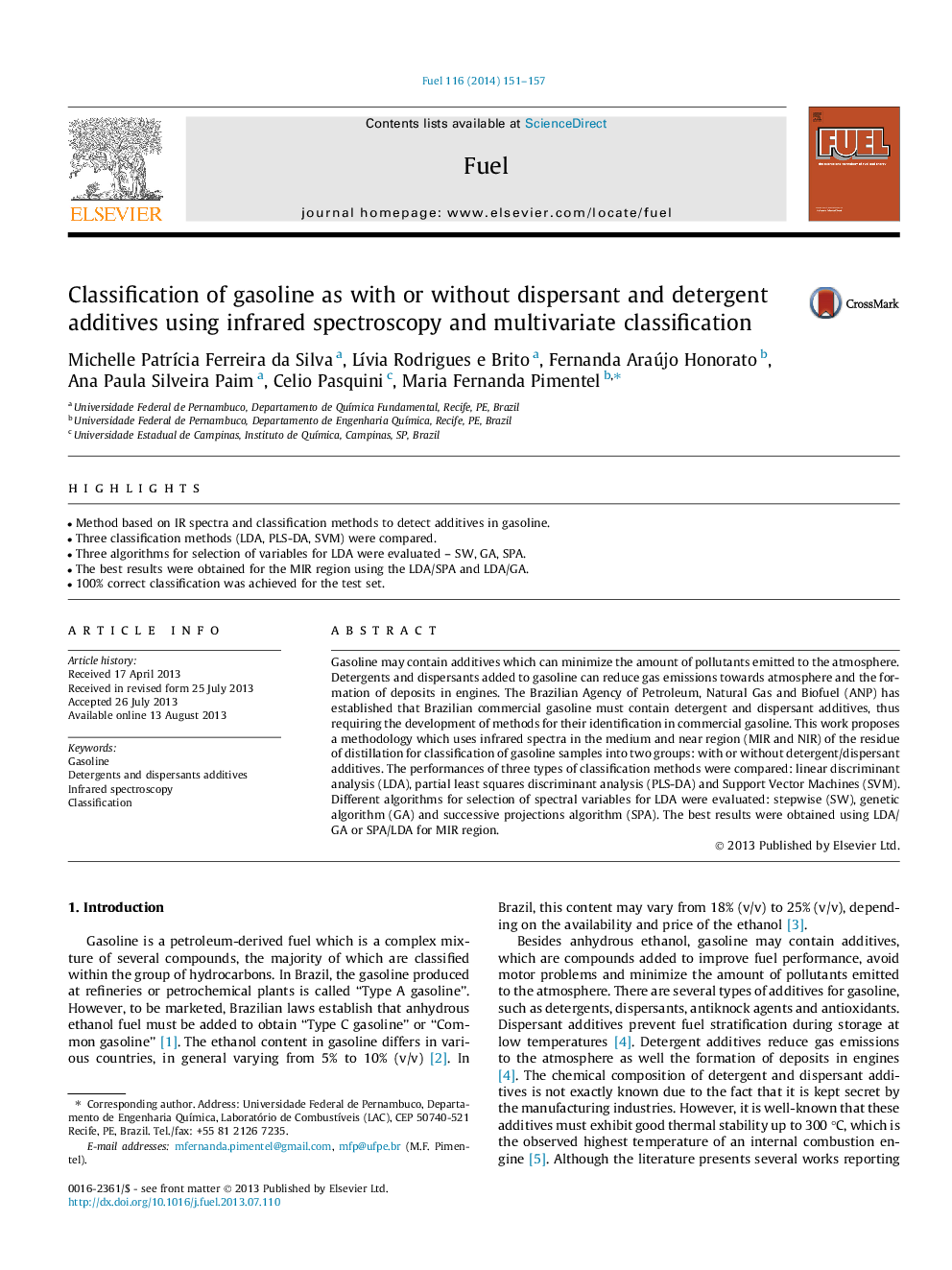| Article ID | Journal | Published Year | Pages | File Type |
|---|---|---|---|---|
| 6638668 | Fuel | 2014 | 7 Pages |
Abstract
Gasoline may contain additives which can minimize the amount of pollutants emitted to the atmosphere. Detergents and dispersants added to gasoline can reduce gas emissions towards atmosphere and the formation of deposits in engines. The Brazilian Agency of Petroleum, Natural Gas and Biofuel (ANP) has established that Brazilian commercial gasoline must contain detergent and dispersant additives, thus requiring the development of methods for their identification in commercial gasoline. This work proposes a methodology which uses infrared spectra in the medium and near region (MIR and NIR) of the residue of distillation for classification of gasoline samples into two groups: with or without detergent/dispersant additives. The performances of three types of classification methods were compared: linear discriminant analysis (LDA), partial least squares discriminant analysis (PLS-DA) and Support Vector Machines (SVM). Different algorithms for selection of spectral variables for LDA were evaluated: stepwise (SW), genetic algorithm (GA) and successive projections algorithm (SPA). The best results were obtained using LDA/GA or SPA/LDA for MIR region.
Related Topics
Physical Sciences and Engineering
Chemical Engineering
Chemical Engineering (General)
Authors
Michelle PatrÃcia Ferreira da Silva, LÃvia Rodrigues e Brito, Fernanda Araújo Honorato, Ana Paula Silveira Paim, Celio Pasquini, Maria Fernanda Pimentel,
